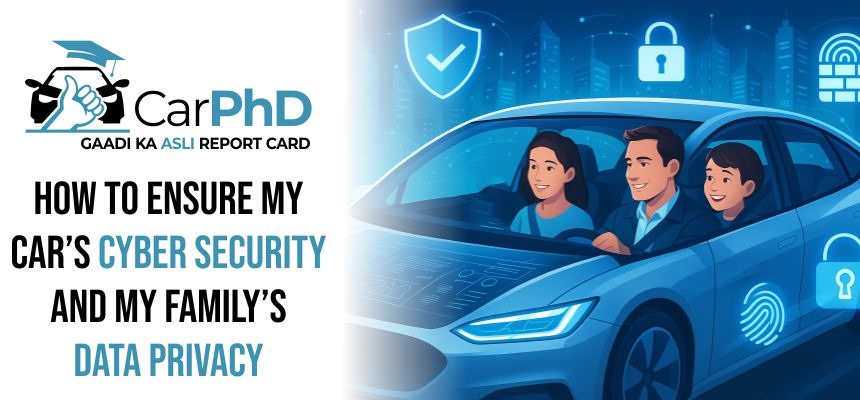
Car


In an era where vehicles are more connected than ever, owning a car is no longer just about maintenance under the hood—it’s about safeguarding what’s under the dashboard, too. Today’s cars are essentially rolling computers, complete with internet connectivity, GPS tracking, Bluetooth, voice commands, and even Wi-Fi. While these features offer convenience and safety, they also introduce new risks: cybersecurity threats and privacy breaches.
So, how can you protect your car and your family’s data in this increasingly digital driving environment? Here’s a guide to help you stay ahead.
Get the best deals on cars. Click here!
⸻
1. Understand the Risks
Modern vehicles can be vulnerable to cyberattacks in several ways:
• Remote hacking through wireless communication systems (Wi-Fi, Bluetooth, cellular).
• Unauthorized access via keyless entry systems or onboard diagnostics (OBD-II ports).
• Data leaks through infotainment systems that store contact info, navigation history, or synced devices.
• Malicious apps or third-party devices connected to your vehicle.
Understanding these threats is the first step to protecting against them.
⸻
2. Keep Your Vehicle’s Software Up to Date
Just like smartphones and computers, vehicles receive software updates from manufacturers that patch known security vulnerabilities. Many newer cars can receive updates over-the-air (OTA), while others may require a visit to the dealership.
Action Tip: Regularly check your manufacturer’s website or app for updates. Enable automatic updates if available.
⸻
3. Be Smart About Device Pairing
Your car’s infotainment system can store sensitive information when you sync your smartphone. This includes your call logs, contacts, text messages, and app data.
Action Tip:
• Only pair devices you trust.
• Delete all paired devices before selling or returning a leased vehicle.
• Use your vehicle’s “privacy mode” if available to limit data access.
⸻
4. Use Strong Passwords and Authentication
Some vehicles and companion apps allow you to set PINs or passwords for access. Always choose strong, unique passwords and avoid using default settings.
Action Tip:
Enable multi-factor authentication (MFA) for your vehicle’s app or account when possible.
⸻
5. Limit Data Sharing With Apps and Services
Many vehicles come with apps and services that collect driving behavior, location data, and personal preferences. While some data sharing is necessary for features like emergency response or navigation, not all of it is essential.
Check out the Best Deals from Authorised Workshops
Action Tip:
• Review app permissions and opt out of unnecessary data collection.
• Regularly audit third-party services connected to your car.
• Disable telemetry features if you’re not using them.
⸻
6. Secure Your Home Wi-Fi and Mobile Devices
Since many vehicle services interact with your smartphone and home network, a weak link outside the vehicle can still jeopardize your car’s cybersecurity.
Action Tip:
• Use strong encryption (WPA3) on your home Wi-Fi.
• Avoid connecting your car to public or unsecured networks.
• Keep your smartphone updated and protected with antivirus software.
⸻
7. Be Cautious with Aftermarket Devices
Third-party add-ons such as OBD-II dongles, GPS trackers, and dashcams may open doors for cyber intrusion if not properly secured.
Action Tip:
Buy aftermarket tech from reputable brands that prioritize security, and check for regular firmware updates.
⸻
8. Educate Your Family
If your family members also use the car or its connected services, make sure they understand basic digital hygiene:
• Don’t connect unfamiliar devices.
• Avoid downloading sketchy apps or connecting the car to unsecured networks.
• Know what information the car is storing.
⸻
9. Consider Professional Help
If you're unsure about your car’s cybersecurity or want an expert evaluation, don’t hesitate to reach out to professionals. Automotive cybersecurity specialists or your dealership’s tech team can help assess risks, install necessary updates, and recommend best practices.
Action Tip:
⸻
Find the Best Deals from Trusted Showrooms
Final Thoughts
As cars become smarter and more connected, cybersecurity is no longer optional—it’s essential. Protecting your vehicle is not just about keeping it on the road, but also about keeping your data, identity, and loved ones safe. By staying informed and proactive, you can drive with peace of mind in the digital age.
Remember: A secure car is a safe car—not just physically, but digitally too.